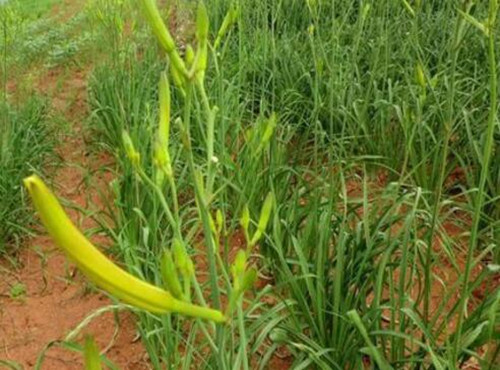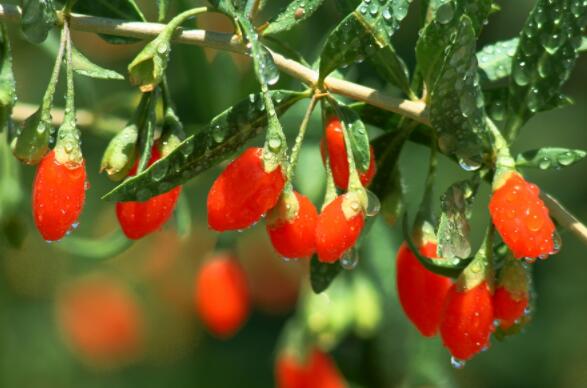Does 2018 kinds of cauliflower make money? How much is the income per mu of planting? What are the market prospects?
Cauliflower is cultivated in the north and south of China, mostly distributed in the south of Qinling Mountains, Hunan, Jiangsu, Zhejiang, Hubei, Jiangxi, Sichuan, Gansu and other places. Qu County, Sichuan Province is known as "the hometown of Huanghua in China". So, do 2018 kinds of cauliflower make money? How much is the income per mu of planting? What are the market prospects? It is understood that cauliflower, also known as forget to worry about vegetables, sweet and cool nature, with a certain effect. The planting method of cauliflower is simple, the success rate of planting is high, the income is obvious, the requirement of soil for planting cauliflower is not high, there are many propagation methods, it can be planted separately, and the survival rate is high. It should be profitable to grow cauliflower.

How much is the income from planting one mu of cauliflower?
Planting one mu of cauliflower can produce dried yellow flowers of about 150kg. According to the current market price, it can be sold at a unit price of about 40 yuan per jin, and the income per mu is about 12000 yuan.
What are the market prospects for growing cauliflower?
Now the vegetable dehydration industry is developing rapidly all over the country, and the national standardized operation and management mode is gradually formed. The quality of products has also been greatly improved. People pay more and more attention to the dehydration processing of cauliflower and the deep processing of ancillary food. The value-added benefit of cauliflower is very obvious, and the prospect is very optimistic. Although the prospect is broad, the restrictive factors are also reflected.
1. Manpower
At present, the production areas mainly rely on the accumulation of a little, each household is more than 1 ton, two middle-aged couples can take care of, the young people in the village are out, and people have to be hired from other places. Cauliflower is done in hot weather, which is more tiring than the work of house porters. It is difficult to find hard-working, efficient and low-paid people.
2. Competition
If the cauliflower planted in pieces is processed in the same way as ordinary villagers, it will form a direct competition. The output of farmers is constant, and the input is also fixed. There are many factors to consider when planting on a large scale. Experience is needed, including management.
3. Quality control
Group management, the production of cauliflower certainly needs the advantage of quality, it needs to be put into production and processing equipment. This is also a large initial investment.
4. Sales channels
The sales of farmers are purchased door-to-door through village and town purchasers. Collectivization management needs to find the right market. Including the processing and transportation channels of cauliflower, which has no good experience to learn from in rural areas.
Planting cauliflower in 2018 requires growers, open mind, enhance food safety awareness, vigorously introduce domestic and foreign production and processing experience, deep processing of cauliflower, in order to enhance the potential value of cauliflower and expand ideas. Strive to make China the main producing area of cauliflower in the world.
Planting skills of cauliflower
1. Skillful selection of plots
Although cauliflower has lax requirements on soil conditions, it has the characteristics of being fond of temperature and light, good moisture, fear of acid and alkali, and fear of stickiness. Therefore, the planting site should choose the land where the soil is neutral or slightly acidic, loose and non-sticky, good aggregate structure, leeward to the sun, convenient drainage, such as flat land around the fertile village house, vegetable garden and so on.
2. Skillfully pick up seedlings
Cauliflower belongs to asexual reproduction, tufted crops. The yield is closely related to the variety. under the same conditions and management level, compared with the early flowering varieties, the late flowering varieties have larger persistent roots, strong root buds, more buds, thick buds, high yield and good quality. For this reason, 5 ~ 6-year-old seedlings should be selected with large clumps of ratoons with sufficient number of individual plants. When transplanting, we must choose sunny weather, dig up the persistent root of cauliflower, cut the persistent root into 6-8 pieces (1 piece per bud) with a knife, and then cut off the fleshy root before planting in the hole, so as to ensure early root, multi-bud, high yield and stable yield.
3. Skillful planting time
The optimum temperature for the growth of cauliflower is 15 ℃ ~ 30 ℃, and the root bud meristem is active and can grow all the year round. Therefore, except for the full seedling stage to the picking stage, it is not suitable to take seedlings for planting in order to obtain economic yield, seedlings can be taken and planted in other periods. In order to ensure the healthy buds of strong plants and promote their early flowering and high yield, the best choice for seedling planting is between October after picking and before "winter seedlings", or from March to April after "winter seedlings".
4. Density of Qiao cloth
The yield increase of cauliflower depends on the population effect, which should be planted in a reasonable and close way, and it is not suitable for too thin and too dense. Interplanting in the vegetable garden, because the soil is more fertile and planted in the rows of other crops, it is appropriate to use double or three rows, row spacing 80cm, hole spacing 40~50cm, dig 1600-2000 holes per mu, and plant 3-5 pieces of persistent root per hole.
5. Skillful application of fertilizer
The growth cycle of cauliflower is 1 year, so it is necessary to apply enough fertilizer. For the new planting garden, no matter it is planted in spring or autumn, it is necessary to open big holes, dig deep holes, apply sufficient basic fertilizer, and apply rotten pig and cow manure 50kg and compound fertilizer 1kg every 40 holes. The base fertilizer should be mixed well with the cave soil, and sprinkle a layer of thin soil in the hole, then plant the seedlings on the thin soil in the hole, and then cover with 3~4cm topsoil to help the seedlings survive early, get up early and do not hurt the roots.
6. Skillful management of garden water
Cauliflower likes to be moist, drought or waterlogging is disadvantageous to the plant growth and bud formation of cauliflower, so keep the garden moist. During the new planting and transplanting period, the soil water holding capacity should be maintained at 70% to 80%, and should be watered in time in case of drought. Drainage should be carried out in time after the ditches are flooded.
7. Skillful treatment of diseases and pests
The main diseases and insect pests of cauliflower are leaf spot, leaf blight, rust, yellow flower aphid, yellow flower red spider and so on. Among them, leaf spot and yellow flower aphids are the most common and harmful. Once leaf spot disease is found, spray with 800 times of 50% topzine wettable powder in time, spray on the leaf surface and back, and spray it again every other week. For the garden where the disease occurs, no matter the severity of the disease, when the flower buds are harvested, the leaves should be cut in time to cultivate the soil, and the leaves will be centrally burned to eliminate the bacteria.
Time: 2019-03-21 Click:
- Prev

How much can 2018 kinds of Chinese wolfberry earn per mu? How much is a sapling? How do you plant it?
Chinese wolfberry is a general term for commercial Chinese wolfberry, Ningxia wolfberry, Chinese wolfberry and other species of Chinese wolfberry. So how much can 2018 kinds of Chinese wolfberry earn per mu? How much is a sapling? How do you plant it? It is learned from the planting base of Lycium barbarum in Ningxia that Chinese wolfberry belongs to traditional Chinese medicine and has high economic value.
- Next

When does Rieger Begonia blossom? How to pick the heart? What if the farmed leaves wither?
Rieger Begonia, also known as Rose Begonia, Rieger Begonia, rich in color, red, orange, yellow, white and so on, the flowers are huge, colorful, unique appearance, color, fragrance, and long flowering period, so, when will Rieger Begonia bloom? How to pick the heart? What if the farmed leaves wither? When does Rieger Begonia blossom
Related
- Fuxing push coffee new agricultural production and marketing class: lack of small-scale processing plants
- Jujube rice field leisure farm deep ploughing Yilan for five years to create a space for organic food and play
- Nongyu Farm-A trial of organic papaya for brave women with advanced technology
- Four points for attention in the prevention and control of diseases and insect pests of edible fungi
- How to add nutrient solution to Edible Fungi
- Is there any good way to control edible fungus mites?
- Open Inoculation Technology of Edible Fungi
- Is there any clever way to use fertilizer for edible fungus in winter?
- What agents are used to kill the pathogens of edible fungi in the mushroom shed?
- Rapid drying of Edible Fungi

